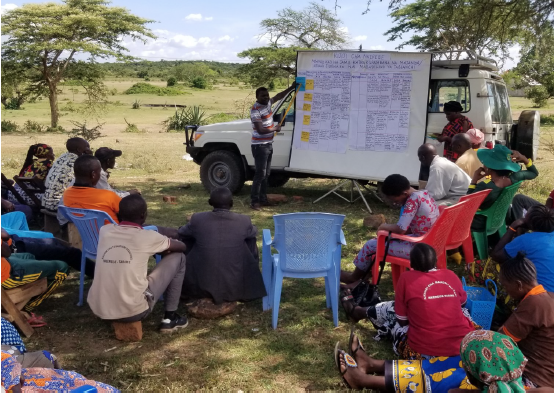Permaculture Design Course (PDC) 2014
We are proud to introduce our first PDC. The Permaculture Design Course (PDC) course is an internationally recognized, minimum seventy-two hour course (two weeks) resulting in a Permaculture Design Certificate. It provides an introduction to permaculture design as set forth by movement founder Bill Mollison.
This 2 weeks intensive course will equip you with the holistic design thinking and skills to create resilient, synergistic systems for living and working with the community. A special emphasis will be on the tropics and drylands.
By observing nature we can use natural patterning to make holistic designs and implement ideas and systems that build on natural processes with energy efficient, low cost and high yeilding results. We expect that our PDC graduates will leave this course ready to design and implement permaculture into a wide range of scenarios; from urban permaculture systems to small farms and community projects.
The trainers:
The course is taught in Kiswahili by PRI - Kenya guest trainer Nicholas Syano and Janet Maro of SAT alongside other SAT staff. Participants will get hands on practical experience in permaculture design and implementation at the SAT farm - a PRI Kenya partner demonstration site.
Nicholas works for PRI-Kenya as a lead trainer part-time, being engaged as a Project Manager for Nyumbani Village and also pursuing his PHD at the University of Nairobi. Nicholas has long standing teaching, research and community development experience with a specific focus on food forests in the drylands.
Janet, a SUA graduate, is originally from Kilimanjaro where the successful traditional Chagga farming systems have inspired modern permaculture. Together with other SAT staff, they have trained more than 3,000 farmers, extension officers, school and university students as well as individuals from all over Tanzania on organic and sustainable agriculture. She did her PDC with Nicholas in 2013 and her permaculture teacher trainer with Warren Brush of Quail Springs Permaculture in 2014.
7th Jul. – 18th Jul. 2014 Course ID: PC 001
Training Fee: TZS 450,000/= per participant, the fee is inclusive of training, materials, accommodation and meals at the center.
Facilitators: Nicholas Syano and Janet Maro
Venue: SAT Training Centre in Vianzi (approx. 20km from Morogoro city)
Apply to: Sustainable Agriculture Tanzania (SAT), P.O.Box 6369, Morogoro, +255 (0) 754 925560, +255 (0) 655 925560 bustani.tushikamane@gmail.com
Application Form: Use this link to download the application form
If you interested in the schedule for the whole year 2014 use this link: Download SAT trainings 2014The topics to be covered:The order of topics in the course will change due to the presence of guest instructors, and emphasis on certain subjects may shift due to the needs and focus of the participants, such as urban or rural residents, farmers, extension officers, field officers and so on.Day 1: Foundations of PermacultureCourse overview and logistics; permaculture defined; observation skills; ethics and the basis of ecological design; permaculture principles, indicators of sustainability, and how to use them.Day 2: Design for Pattern LiteracyDesigning from patterns to details; natural patterns as a design tool; the permaculture design process; methods of design; the Zone and Sector System.Day 3: Thinking Like a WatershedThe water cycle; Catching and storing water; designing tanks, cisterns, and other water storages. Roof-top water catchmentsDay 4: The Path to Water WisdomPonds, swales, and keyline design; water in the permaculture landscape; greywater and blackwater system design; aquaculture.Day 5: Soil: The Living Skin of the EarthSoil structure and composition; soil ecology and nutrient flow; creating healthy soil; analyzing your soil; compost, nutrient teas, and mulches; cover crops and green manures; strategies for your own soil conditions.Day 6: A Revolution Disguised as GardeningHow ecosystems work; the home garden; plants of many functions; polycultures; integrating animals and insects into the garden; pest management; wildlife habitatDay 7: Food Forests, Guilds, and EcosystemsTrees and their many roles; designing plant communities; the orchard; food forest design; hedgerows, windbreaks, and shelterbelts; biomimicry.Day 8: The Built EnvironmentThe functions of shelter; methods of green and natural building; designing shelter for climate and culture; living roofs; site selection; designing for disaster.Day 9: Energy and Tools for Working WiselyPopulation, energy use, and Peak Oil; renewable energy strategies; appropriate technologies for heating and cooling, transportation, cooking, and construction.Day 10: Ecovillages, Community,and Thinking GloballyCommunity dynamics; intentional communities, co-housing, and group decision-making processes; city repair; ecovillages. Designing for urban, suburban, or rural situations. Tropical and dryland strategy review.Day 11: Green Economics and Right LivelihoodMoney, finance, and local currency networks; permaculture in education; green business guilds and networks; building social capital. Design project preparation.Day 12: Putting it Together: The Design ProjectWhere to from here? Group design project presentations; talent show and final party.






